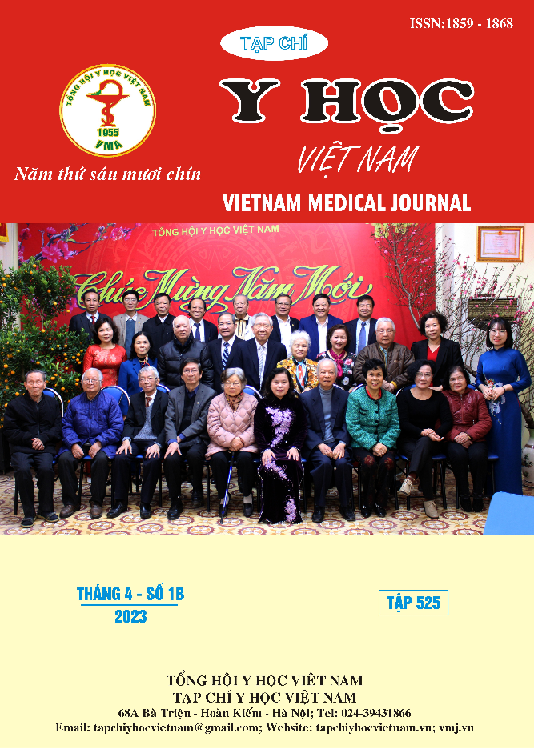THE RISK FACTORS OF CHRONIC IMMUNE THROMBOCYTOPENIA IN CHILDREN AT CHILDREN’S HOSPITAL 1
Main Article Content
Abstract
Objectives: (1) Describe the clinical, subclinical characteristics of Immune thrombocytopenia (ITP) in children at Children’s Hospital 1 (2) Explore some relationship between clinical and subclinical characteristics of developing chronic ITP in children at Children’s Hospital 1. Research methodology: Descriptive study combined with rescuing. Subjects: 205 patients with ITP in Department of Dengue Hemorrhagic Fever and Hematology – Children’s Hospital 1 from 01/2019 to 01/2020. Results and conclusion: General characteristics: chronic ITP 23,4%, non-chronic ITP 76,6%. Chronic ITP (48 cases): female 62,5%, male 37,5%, female/male 1,67/1; Average age 83,6 ± 53,4 months; The disease usually has an acute onset with the average time of expression before admission is 4,9 ± 2,1 days. 100% of patients had bleeding at various degrees, most of them were skin and mucous hemorrhage accounting for 72,9%, intracerebral hemorrhage 4,2%; platelet counts (PLT) 19,7 ± 9,6 G/L, PLT at 3 weeks 20,3 ± 7,4 G/L; ANA positive 12,5%; Single nucleotide polymorphism (SNP) of IFNA17 gene 16,7%. Non-chronic ITP (157 cases): female 45,9 %, male 54,1 %, female/male 0,85/1; Average age 26,0 ± 39,5 months; The disease usually has an acute onset with the average time of expression before admission is 2,2 ± 1,1 days. 100% of patients had bleeding at various degrees, most of them were skin and mucous hemorrhage accounting for 82,8%, intracerebral hemorrhage 1,3%; platelet counts (PLT) 18,3 ± 11,7 G/L, PLT at 3 weeks 46,6 ± 24,1 G/L; ANA positive 3,8%; SNP of IFNA17 gene 84,1%. There was a positive relationship (p<0,05) between this factors and chronic ITP: older age of onset, average time of expression before admission, non-higher PLT at 3 weeks, ANA positive. There was a negative correlation (p<0,05) between SNP of IFNA17 and chronic ITP.
Article Details
Keywords
immune thrombocytopenia; risk factors, predictor chronic ITP
References
2. Despotovic JM et al. Gene affecting risk, severity of chronic ITP are identified. Blood 2015;126(23): pp.73.
3. Donato H et al. Demographic data, natural history, and pronogtic factors of idiopathic thrombocytopenic purpura in children: amulticentered study from Argentina. Pediatric Blood Cancer 2009;52(4):491-496.
4. Katja MJ, Heitink-Pollé, Joyce N. Clinical and laboratory predictors of chronic immune thrombocytopenia in children: a systematic review and meta-analysis. Blood 2014;124 (22):3295-3307.
5. Lâm Thị Mỹ, Nguyễn Trọng Lân, Nguyễn Kim Hồng. Chẩn đoán và điều trị Xuất huyết giảm tiểu cầu miễn dịch. Y học TPHCM 2003;7(1):33-37.
6. Neunert C, Lim W, Crowther M. The American Society of Hematology 2011 evidence-based practice guideline for immune thrombocytopenia. Blood 2011;117(16):4190-4207.
7. Hồ Thị Sương (2014). Nghiên cứu đặc điểm và kết quả điều trị bệnh xuất huyết giảm tiểu cầu miễn dịch tại khoa Nhi Bệnh viện Trung Ương Huế, trường đại học Y dược Huế, Huế.
8. Ying S, Sili L, Wenjun L. Risk Factors and Psychological Analysis of Chronic Immune Thrombocytopenia in Children. Int J Gen Med 2020;13:1675-1683.


